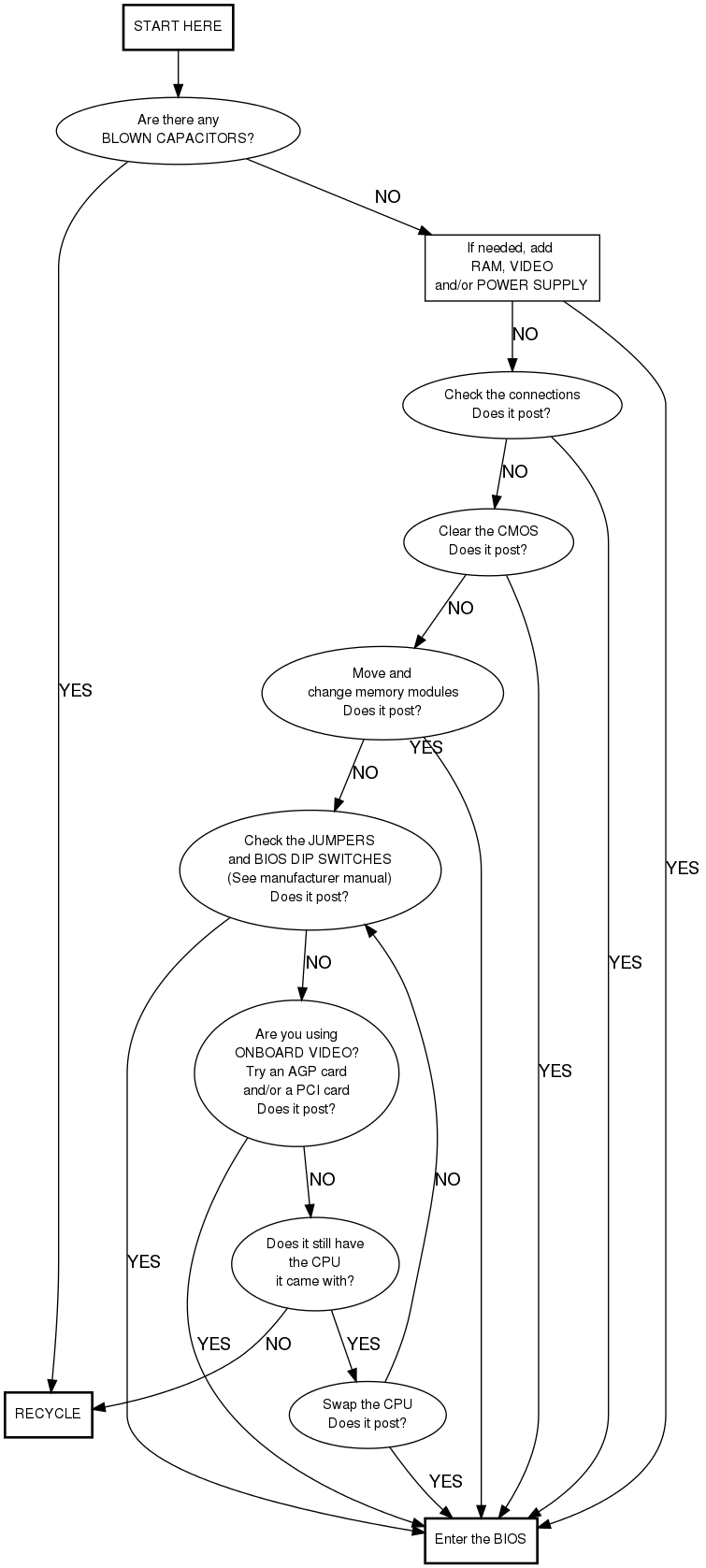Motherboard Testing
Jump to navigation
Jump to search
Process
First, grab a motherboard and testing kit with cards, memory and volt meter. Check the motherboard to see if it is on the list of mobos we like identifying the socket number.
Boards We Like to Test
- Socket 423
- Socket 462
- Socket 478
- Socket 479
- Socket 603
- Socket 754
- Socket 775
- Socket 939
- Socket 940
- Socket AM2

Blown capacitors Check for curved or leaking top.
- Check for visual defects (blown caps, mutilated components)
- If only one capacitor is bad, send the motherboard to recycle except if it is one that supports Pentium P4.
- look for burn marks or discolerment.
- After checking the packaging and the socket type that matches the motherboard,
- Identify the motherboard by manufacturer, model, version
- Go to the manufacturer website or just search via google and determine with which range of processor the motherboard is compatible.
- Put a compatible heatsink with a fan on top of it.
- Check the battery for the CMOS, if less than 3 volts replace it.
- Add some memory
- DIMM modules, SDRAM, DDR SDRAM or Rambus RDRAM (remember to install Rambus in pairs and use CRIMMs).
- Attempt to post
- connect the minimal things needed to post (power, keyboard, video, etc)
- if you need help see flowchart below.
- If board beeps but won't post, check the Beep Codes and diagnose the problem.
- Power down, then attach
- Use an IDE cable (40 pin)to connect the hard drive to the Primary IDE.
- Use the second IDE cable to connect the CDROM drive to the Secondary IDE.
- Use the floppy cable (34 pin)to connect the Floppy Drive to the motherboard.
- Boot to Memtest, Let it run for a minute, it will run for ever if you let it (The memtest program is a boot option on the hard drive)
- Boot up to Operating System
- Check that the mouse and keyboard work
- If you have on board video check that it works.
- Test all the USB ports with a mouse
- If you have on board sound play a audio cd, if not then take a look at a data cd
- run stress-test
- Some cases might call for testing
- SATA
- If the motherboard works and is worthy of the store then label it.
processor type and or speed type of memory it takes special featuers
Useful links
- Information on different motherboards with summary description, it's quiet commercial but it provides quickely the basic information you're looking for : http://www.motherboards.org/ For complete and accurate information on motherboard just go to manufacturer website like Abit [1], Asus [2], MSI [3] and the others. Sometimes you are able to download the motherboard manual.
- The two main processors manufacturers can be visited on : http://www.intel.com/ and http://www.amd.com/us-en/
- If you just want an answer to any question around the computer or to understand something, go to http://computer.howstuffworks.com/
Flow Chart
Here's a chart flow that can help you to visualize the process
